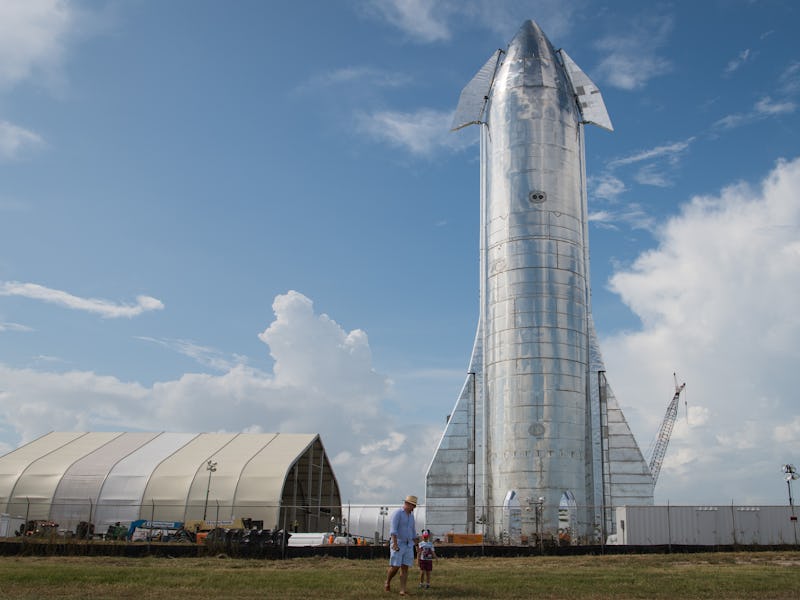Musk Reads: Starship's first flight may have a launch date
Musk's factories produce more ventilators and Starlink gets a regulatory thumbs-up. Could you catch Legionnaires’ disease in the Mars city?

Musk’s factories produce more ventilators and Starlink gets a regulatory thumbs-up. Could you catch Legionnaires’ disease in the Mars city? It’s Musk Reads: SpaceX Edition #155.
A version of this article appeared in the “Musk Reads” newsletter. Sign up for free here.
Musk quote of the week
“Given NY pressing needs, we’re delivering Resmed, Philips & Medtronic ventilators to NY hospitals starting tonight.”
- Read more about Musk’s efforts to produce ventilators.
SpaceX Starship
Is Starship, the SpaceX vehicle designed to send humans to Mars, about to take its first flight? SpaceX followers at the NASASpaceFlight forum have spotted a series of beach closure requests that suggest a full-size prototype could soon take flight. The documents suggest a static fire of its engines could take place between April 1 and 3, followed by a 150-meter hop between April 6 and 8. Although SpaceX flew a shortened version of the ship, dubbed “Starhopper,” to a 150-meter height in August 2019, it has yet to fly any of its full-size 164-feet prototypes. The beach closure documents reference a Federal Aviation Administration permit granted for the “Starhopper” vehicle, one that’s valid until June 2020. One of the full-size ships, dubbed “SN3,” was spotted last week making its way to the launch pad.
Images of the “SN3” prototype were shared by Musk this week, marking a key moment in Starship’s development. Musk previously mentioned on March 9 that “SN3” would be designed to support static fires and short flights. The successor, “SN4,” would be designed to support even longer flights. Previous reports suggest SpaceX plans to use Starship to send up satellites in 2021 before hosting a trip around the moon in 2023 and building a city on Mars by 2050. Read more.
What’s next for SpaceX: SpaceX is set to launch a SAOCOM 1B satellite from the Cape Canaveral Air Force Station in Florida using a Falcon 9 booster. Originally set to launch on March 30 at 7:21 p.m. Eastern time, it has been postponed to an as-yet undetermined time. SpaceX launched the SAOCOM 1A satellite in October 2018, and the pair are designed to assist with disaster relief management in Argentina.
In other SpaceX news…
SpaceX has been selected by NASA as the first American commercial provider to send supplies to the Lunar Gateway. The craft will offer living quarters and labs to support missions around the Moon. It will support the Artemis program that will land the next man and first woman on the moon by 2024. SpaceX will use a variant of Dragon designed to support more than five metric tons of cargo.
SpaceX’s Starlink project has received clearance to operate up to 1 million ground-based terminals. The filing paves the way for SpaceX to deliver its planned high-speed satellite internet service, targeted at rural and underserved areas. The company is aiming to start services for the northern United States and Canada this year, followed by broader coverage in 2021. Read more.
Musk Reads mailroom
Kai Soukka writes
I wonder what would occur if a contagion got to Mars. Say, for instance, a Legionnaires’ disease outbreak from contaminated potting mix sent there, which then ends up in atmosphere humidification systems then sickening critical staff within the settlement complex? What are the protocols?
It’s an interesting issue, but Mars’ location could actually benefit in these situations. Rice University professor Scott Solomon told Inverse last year that the few months’ flight from Earth to Mars could act as a quarantine period, a chance to eradicate diseases and maintain a sterile Mars city. For the soil in question, the astronauts could sterilize it during the trip. This would fit with NASA’s goal of planetary protection, avoiding cross-contamination between planets. Perhaps most importantly, it would reduce the chances of a new bug suddenly running riot.
If the worst comes to the worst? Astronauts with a disease tend to be isolated to stop it from spreading, and researchers have been exploring how medical procedures used on the International Space Station could be used for a Mars mission.
William Bloom writes:
We need to have a better name than Demo–2 for the return of American astronauts going to space on American rockets. This is momentous. Project Gemini put two astronauts into space, flew higher, perfected docking and did a lot of experiments that SpaceX has built on. Maybe something related to Gemini? Love what SpaceX is doing.
Gemini was named after the star constellation, so perhaps something related. Taurus, a bordering constellation, could symbolize “charging ahead” into the future. Perhaps SpaceX could also take inspiration from Gemini’s proposed successor, the imaginatively named “Big Gemini.”
Got any comments or queries? Don’t forget to send them over to muskreads@inverse.com.
Video of the week
Starship SN3’s sheer size becomes clear as it moves out to the launch pad.
Got any photos or videos you’d like to share? Feel free to send them over to muskreads@inverse.com.
The ultra-fine print
This has been Musk Reads: SpaceX Edition #155, the weekly rundown of essential reading about futurist and entrepreneur Elon Musk. I’m Mike Brown, an innovation journalist for Inverse.
- Email me directly at mike.brown@inverse.com and follow Inverse on Twitter @inversedotcom.
- Follow me on Twitter @mikearildbrown.
- Got any comments or queries? Don’t forget to send them over to muskreads@inverse.com.
A version of this article appeared in the “Musk Reads” newsletter. Sign up for free here.